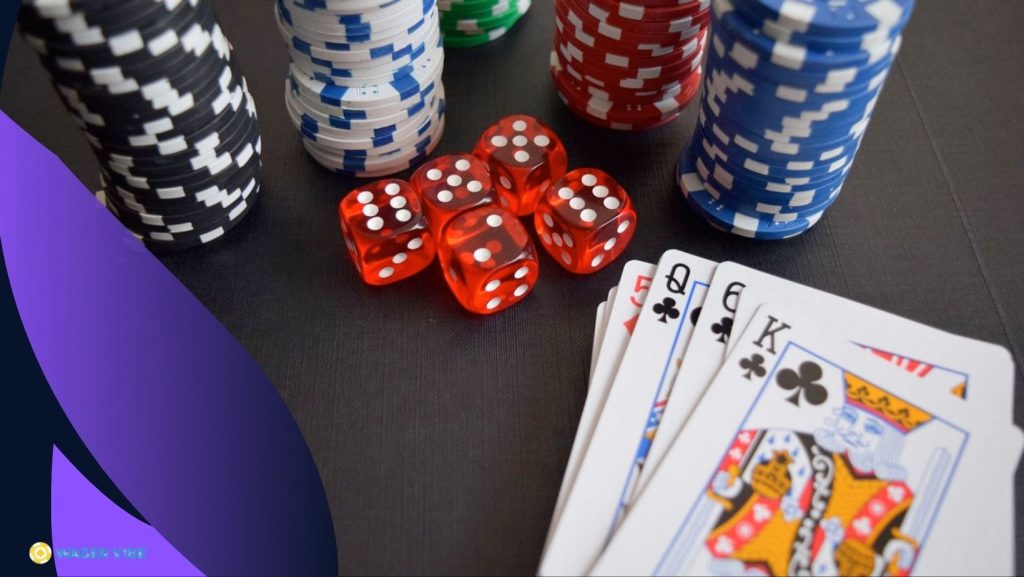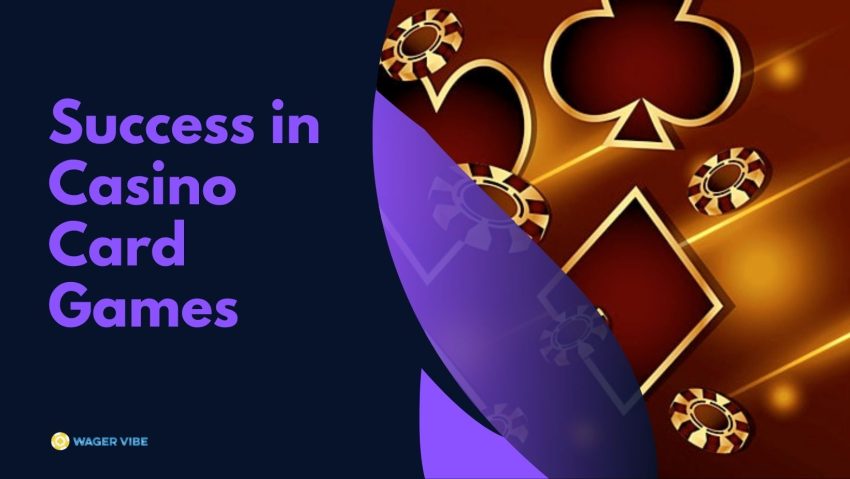Whether you are a seasoned gambler or a casino newbie, the range of casino card games to choose from can seem overwhelming. But once you understand the basics, most games reveal simple strategies that can tilt the odds in your favor. The thrill of betting and the social atmosphere around the tables add to the enjoyment. As this guide will show, by knowing the fundamentals of the popular card games, you can maximize your entertainment value – and maybe even come out ahead!
Mastering Blackjack Basics
When playing any of the list of casino card games, blackjack stands out for offering the best odds. The house edge can be less than 1% with perfect play! While chance is still involved, understanding basic blackjack strategy will dramatically boost your odds. The key principles include:
- Knowing when to hit, stand, double down, split pairs, or take insurance based on your hand strength
- Adjusting plays based on the dealer’s upcard
- Using basic strategy charts as a guide until moves become second nature
- Understanding key blackjack rules like when the dealer must hit or stand
Learning basic blackjack strategy takes some time and practice. But doing so gives you an edge over casual players and enhances the entertainment value. And who knows – you might even walk away a winner more often than not if you master the fundamentals!
Internalizing Basic Strategy
Once you understand blackjack basics, the next step is mastering basic strategy – the mathematically optimal plays for every hand situation. Basic strategy gets complicated quickly since the right move depends on your hand total and the dealer’s upcard. This table summarizes the basics:
| Hand Total | Dealer Upcard | Recommended Play |
| 8 or less | 2-6 | Hit |
| 9 | 7 or 10 | Hit |
| 10 | 2-9 | Double if possible, otherwise hit |
| 11 | Any | Double if possible, otherwise hit |
| 12 | 2-6 | Stand |
| 12 | 7-Ace | Hit |
| 13-16 | 2-6 | Stand |
| 13-16 | 7-Ace | Hit |
| 17+ | Any | Stand |
Memorize this table as a starting point. You’ll notice certain hands like Hard 11 and hard 10 are clear double downs against any dealer upcard. Other hands require more judgment. But following a basic strategy puts the odds in your favor.
Harnessing Card Counting

Once you have basic strategy mastered, card counting takes blackjack mastery to the next level. Card counting involves tracking the dealt cards to determine when the remaining deck favors players or the dealer. Here is a step-by-step overview:
- Assign a positive, negative, or zero value to each card based on the count system
- Tally a “running count” as each card is revealed, tracking the shifting card ratios
- Convert running count to a “true count” based on cards still in the deck to gauge advantage
- Bet more when the true count favors players due to extra high cards left
- Bet less when the true count favors the dealer due to many low cards left
Card counting is challenging to learn but offers a provable mathematical edge if mastered. Just don’t get caught or you may be kicked out! Seek out games with favorable rules, bet wisely, and card counting can shift the odds in your favor.
Strategic Pair Splitting
When the first two cards dealt are a pair with the same face value, splitting them into two separate hands can be a profitable play. Here are some tips on when to split pairs:
| Pair Card | Recommendation |
| Aces | Always split |
| 8s | Always split |
| 9s | Split if dealer shows weak card (2-6) |
| 7s | Split if the dealer shows 7 or lower |
| 6s or lower | Never split |
Splitting requires doubling your bet, but it transforms one questionable hand into two stronger ones. Pairs of aces and eights in particular should always be split – the hands created have fantastic odds. Make sure to factor in the dealer’s upcard when deciding on other pairs. Mastering when to split pairs provides more opportunities to capitalize on good hands.
Mastering Texas Hold’em
As the most popular poker variant played in casinos, Texas Hold’em appeals to novices and experts alike. Each player gets two private “hole” cards, plus there are 5 community cards revealed in phases that all players use to make the best 5-card hand. Here’s a quick guide to key terms and winning concepts:
| Term/Concept | Definition |
| Blinds | Forced bets that drive initial action |
| Flop | First, three community cards revealed |
| Turn | The fourth community card revealed |
| River | The fifth and final community card |
| Position | Acting last to gain more info from other bets |
| Draws | Chasing cards to complete a hand like a straight |
| Pot odds | Comparing the pot size to the call amount |
Use position, draws, pot odds, bluffing, and other advanced concepts to maximize profits. And above all – patience, knowing when to hold and fold, and reading opponents separates winners from losers.
Conquering Seven Card Stud
Seven Card Stud presents a twist from draw games like Hold’em. Rather than community cards, each player receives 3 cards face down and 4 exposed over betting rounds. To prevail:
- Consider starting hand strength based on your two initial face-up cards.
- Adjust as the third round exposes the 3rd upcard. Fold with little improvement.
- Pay close attention as the final two face-down cards appear. Look for concealed pairs or possible straights/flushes.
- Note visible opponent cards for your edge. Consider their body language.
- Manage your bankroll across all rounds. Consider pot odds carefully on big bets.
- Bluff sparingly since some cards are exposed. But do throw opponents off balance.
Like all versions, this game rewards patience, discipline, bankroll strategy, and spotting card advantage. Study up and you can master the unique flow of play.
Mastering the Bluff
Bluffing – making aggressive bets to make opponents fold superior hands – is an art form in poker. Use these tips to bluff effectively:
| Type of Bluff | When to Employ |
| Pure Bluff | With good sensing of opponents, no hand value, decent position |
| Semi-Bluff | When you have draws to improve like open-ended straight or flush |
| Check-Raise | After checking early, raise opponent bets to force folds |
Bluffs require gut instinct, reading opponents, and selling the drama. Stick to these fundamentals:
- Do not bluff blatant “calling stations” or when severely short-stacked
- Ensure the pot is right to attempt a steal
- Make big bets for max fold equity impact
- Sell it with a strong acting performance!
With the perfect storm of cards, players, pot size, and position, bluffing swings fortunes. But use selective judgment rather than just wild aggression.
Uncovering Poker Tells

In poker, tells refers to subtle opponent behavior that may betray hand strength like:
- Fidgeting when bluffing or desperate betting patterns
- Avoiding eye contact when weak or lying
- Aggressive stacking motions with strong holdings
- Shallow breaths or shaking with monster hands
To leverage tells:
- Establish baseline mannerisms when first sitting down
- Watch betting actions more than physical ticks which can mislead
- Look for deviations from their baseline behavior
- Combine tell-spotting with odds and hand equity assessments
- Do not telegraph your monster cards through dramatic tells!
With experience, you can leverage tells gained for smart folds, value bets, hero calls, and timely bluffs. Just beware of reading too much into one twitch or furtive glance alone. But when the physical lines up with mathematical odds, you know when to strike.
You might like Exploring the Features – Bonus Rounds in Slot Games
Mastering Craps Bets
The raucous game of craps may seem chaotic for types of casino card games novices. But by concentrating on 2-3 key wagers, you gain favorable odds rare for casino games. We recommend:
- The Pass Line bet to ride the shooter to 7 or 11 without landing on craps numbers first. This bet boasts a low house edge of 1.41%
- Taking full odds behind Pass Line plays once a point number is established. Odds bets uniquely carry no house edge, making your combined risk-reward outlook positive.
- Considering Don’t Pass Line to fade shooters on cold streaks. Here you win if the shooter sevens out or hits 2 or 3 without repeating the point number.
Stick to those core plays, ignore sucker bets like Big 6/8 or Hardways, and manage your rolls carefully. Before long you master the ebbs, flows, and satisfying wins unique to craps gameplay.
Capitalizing On Odds Bets
Once a Pass Line point number is established, craps permit Odds Bets directly behind the initial wager but with an incredible distinction:
| Point Number | Odds Payout | House Edge |
| 4 or 10 | 2 to 1 | 0% |
| 5 or 9 | 3 to 2 | 0% |
| 6 or 8 | 6 to 5 | 0% |
These proportional payouts exactly correlate to the probability math for those points repeating before a 7out. And with no house advantage, backing Pass Line plays with 2-3X odds substantially cuts overall risk.
Getting max odds allowed, even at lower minimums, is a must for craps prowess. This unique bet lifts return-to-player percentages otherwise rare for casino games. Just watch bankroll swings on points lasting many rolls. But over time, embracing odds bets makes you a savvy craps shot-caller able to ride hot shooters for all they are worth!




